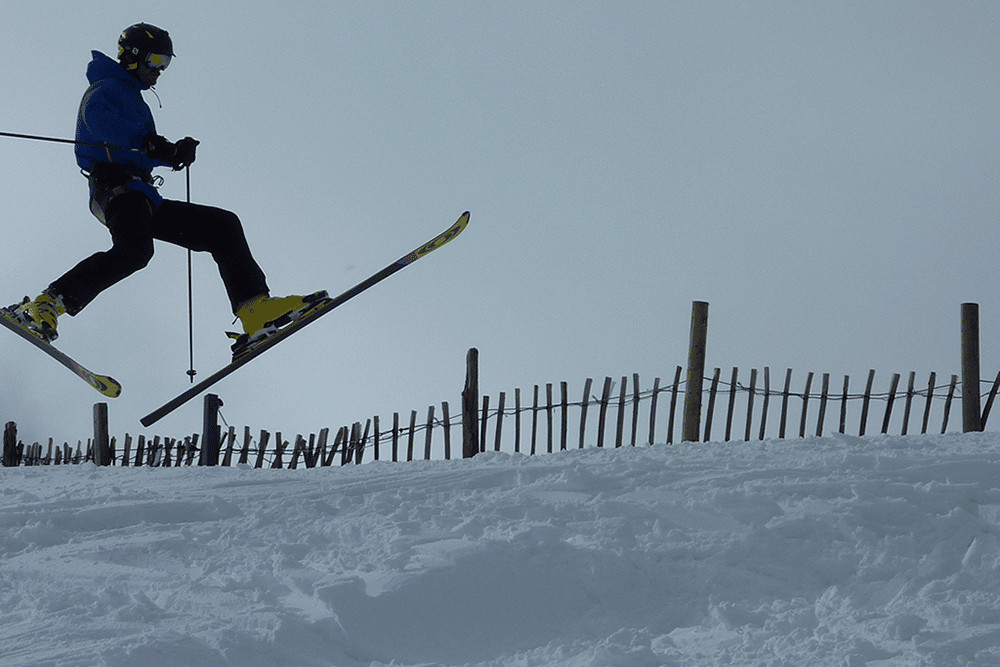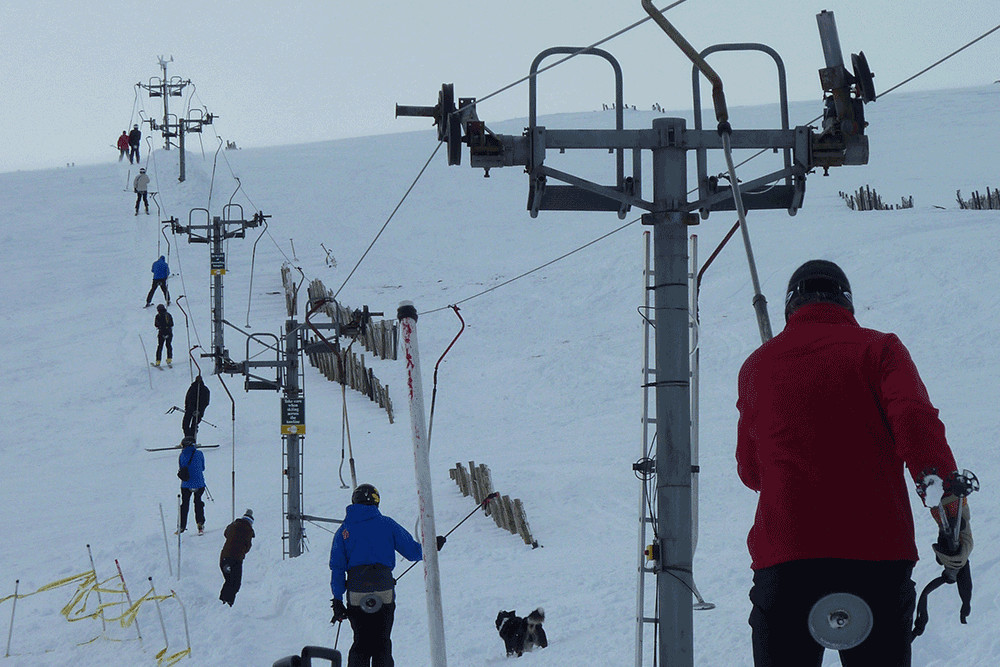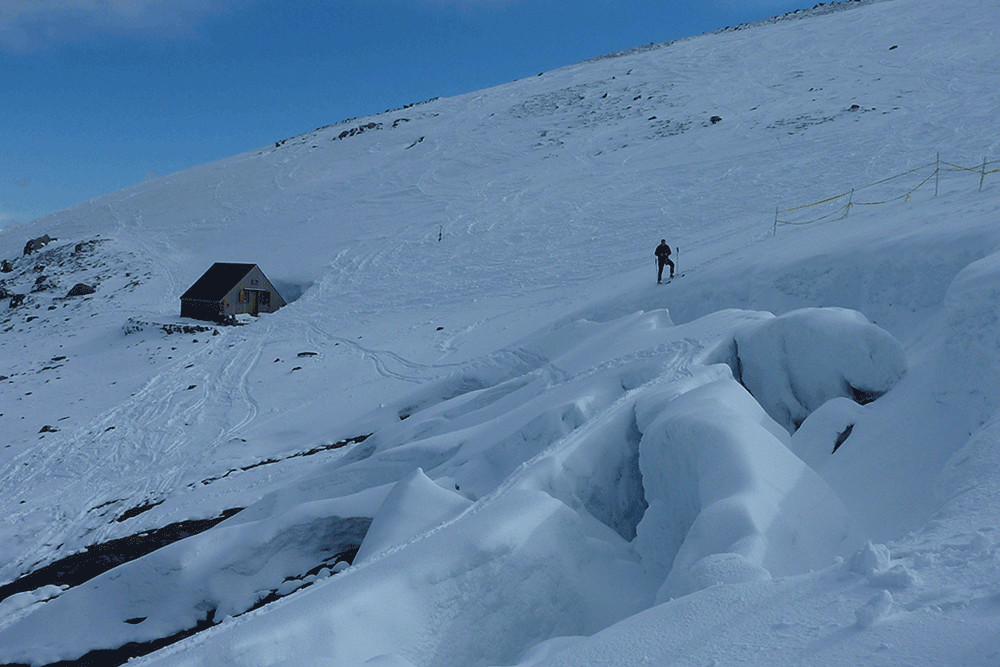Skiing in the Lake District
(6 minute read)
Every year, thousands of us head to the Alps or the Pyrenees for some snow time – but do we really need to travel so far from home to strap on our skis or snowboards? Not according to Mike Sweeney, President of the Lake District Ski Club, who spends much of the winter on the fell-tops around Raise in search of fresh powder. He tells us about the history of skiing in the Lake District, going ‘viral’ after lockdown, and using England’s second-highest flushing loo…

Raising spirits
I’ve been involved with the Ski Club for about 12 years. I took up skiing in 2008, and found out about the Lake District Ski Club after my first ski trip abroad. I stumbled up in a blizzard, and couldn’t find the lift – which I found out wasn’t running anyway – and after that I was hooked. It’s a love affair really. I just love going up there.
We’re the third oldest ski club in the country after the Ski Club of Great Britain and the Eagles Ski Club. We’re a really important part of the history of UK skiing. We were founded in 1936, which actually predates resorts like Verbier and the Three Valleys in France and constructed the UK’s first ski tow in 1954. William Heaton Cooper, the Lakeland artist, was an early club member, and designed the first club badge. Our first president was Leslie Somervell; his brother Howard was with George Mallory on his Everest expeditions.
“We actually predate resorts like Verbier and the Three Valleys in France.”
The club isn’t just part of the history of UK skiing; it’s part of the fabric of Lake District life. There’s a great body of knowledge and experience within the club. Many of our members live locally. We have a range of ages, from early teens up (one of our former presidents, Gerard Unthank, is still skiing here in his 80s). Whenever possible we open to non-members, usually during the week – we couldn’t do it on a sunny Sunday, as we’d be overwhelmed.
In May 2021, we had 3 days of snow and were able to run the tow just after the lockdown had been lifted. We were like pit ponies put out to grass – or to snow! Ear to ear grins, everyone giddy. That went global; there was a guy in Whistler, Canada, tweeting, “You’re doing better than we are!” and Meteo France tweeted “incroyable!” We were the only lift still running in western Europe. We have around 350 members, but now, thanks to social media, also have a waiting list of 400 more and a Facebook group of more than 7000!

We’re not a ski resort, so you need to be properly prepared. It’s a fairly tough steep climb up carrying boots and skis, and you need to be fit, physically and mentally. You also need the right kit. We always ask people to walk up with a member first. At the moment we only have a single fixed button tow, which is 360m long, although we’ve just installed a new rope tow too which should enable us to accommodate more skiers when conditions allow.
Our members’ hut is small but cosy. You can make a cup of tea, and it’s heated with power from the tow hut. There’s also a flushing toilet – the second highest in England, after the radar station at Great Dunn Fell in the Pennines, we believe. We call it “the powder room”.

The usual way up is from Glenridding, but people come from all points of the compass. It’s also possible to come up from Thirlmere; it’s a longer walk up, but can be a really good run at the end of the day if you’re ski touring. In December and January, we close around 3 or 3.15pm, because we need to allow an hour of daylight to get down. Later in the season we’ll run a bit later.
One of the things that makes skiing here special is the unpredictability. It’s different every time. We might not have that many long runs, and the snow quality can be variable, but when the elements align, it’s a real adventure. Part of the fun is the camaraderie, and how remote the runs are: it’s an hour’s climb at least to get up there, and there are no paths for the last bit, so you need dedication. Some days are epic, some are marginal – grizzly, wet, windy – but you always have an adventure. I’ve had days that I’ve enjoyed as much as days in the Alps.

The nature of the skiing here means that we can often only decide to go the day before, or sometimes even on the same morning. It’s a bit like surfing – you see a good forecast, and some people drive through the night to make the most of it. I’m also a windsurfer, and it’s a similar buzz. You take it when you can get it. We’ve even had a guy who drove up from Essex overnight. It definitely helps to be flexible with your job!
The club wouldn’t be what it is without a man called Bernie Warriner. He spent two summers pretty much living on the fell, building first the tow hut and then the members’ hut. He named a lot of the runs. None of the runs are marked. We have two permanent snow fences, but beyond them, it’s pretty much ski wherever, following the natural contours of the mountain when conditions allow.
“There’s an old saying that if you can ski on Raise, you can ski anywhere!”
We get what nature provides. We don’t have any piste bashers – unless you count shovels and snowboarders. The conditions can change fast during the course of a day. We get bumps, ice, sometimes powder – and depending on which way the wind has been blowing, different areas ski better than others. There’s an old saying that if you can ski on Raise, you can ski anywhere!

It’s always surprised me, but we have remarkably few incidents. I think because the snow isn’t groomed, it means you’ve got to ski within your limits. We talk to the fell-top assessors to get safety reports on the day, and they come and ski with us occasionally. We also have several mountain rescue team members who are regulars. We don’t often get enough snow for avalanches, but you still have to watch out in some areas.
In a good year, the season can run from November through to early May. We’ve even had skiing in June – that was back in 1963 mind you! Most years, the snow comes and goes so you grab it while you can.
We do après-ski a little differently here. No glühwein for us, thanks. A pint of bitter – preferably Helvellyn Gold – does nicely. The Traveller’s Rest in Glenridding is the traditional post-ski spot.
Read our quick guide to skiing in the Lake District
Experienced Fell-Top Assessor Zac Poulton shares some advice and safety considerations for getting up Helvellyn in the cold and tips on how to stay safe in the Lakes.
Book your stay at Another Place, The Lake